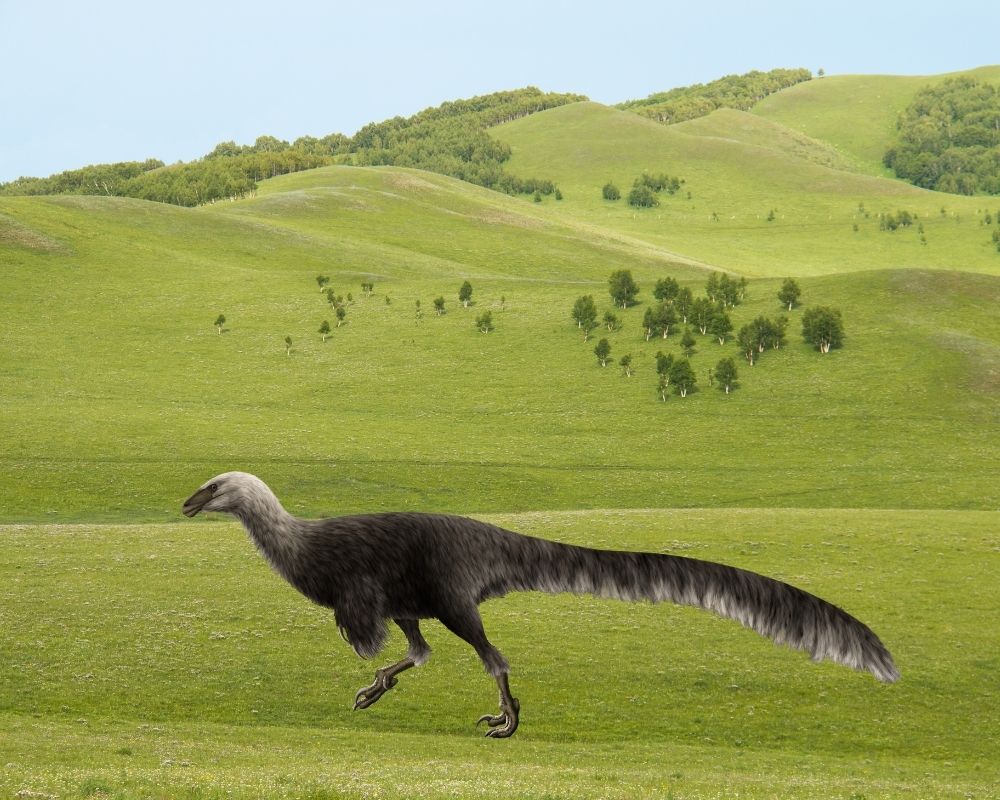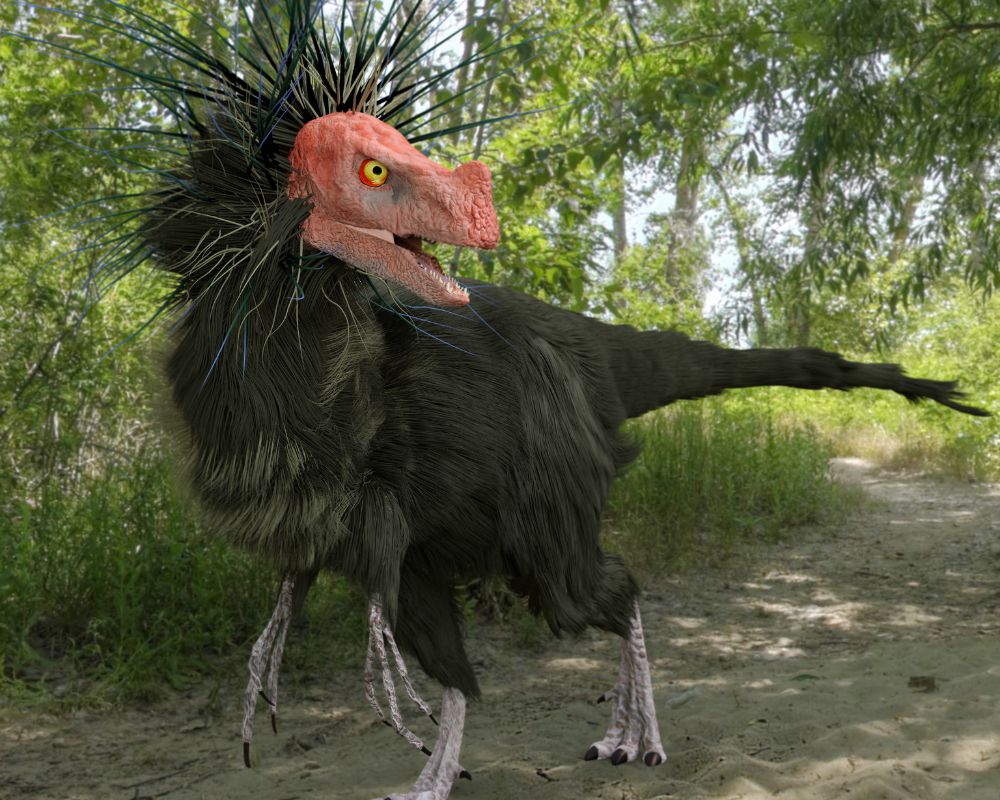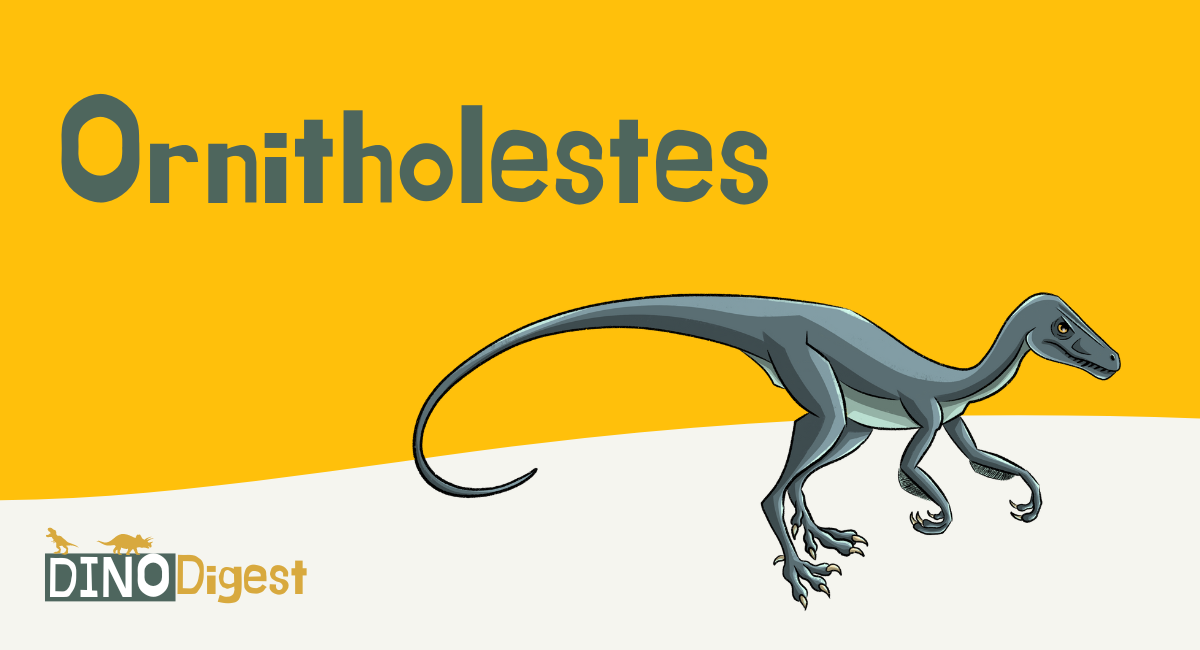The small size of the Ornitholestes sure doesn’t define its predatory abilities. The Ornitholestes was carnivorous and used its long claws to hunt. But did it actually rob birds? This theropod dinosaur, a relative of the Tyrannosaurus rex, will change your vision of birds and dinos!
Table of Contents
Some Quick Facts about the Ornitholestes

| Name | Ornitholestes (meaning “bird robber”) |
| Type of dinosaur | Theropod |
| Territory | Floodplain grasslands and forests |
| Size | Small, 7 feet long, 3 feet tall |
| Color | Unknown, has short coat of feathers (or scaly skin) |
| Interesting Characteristics | Long tail, subrectangular, small head, short teeth rows |
| Diet | Carnivore (small terrestrial animals and fish) |
| Major Threats | Bigger carnivores, natural disasters |
The Ornitholestes was a tiny dinosaur living among giants. It was a coelurosaur (a bird-like dinosaur, much like Pisanosaurus). It lived in the Late Jurassic Period in North America and was thought to steal and eat birds.
What Is the Meaning of “Ornitholestes”?
The name Ornitholestes is Greek and means “bird robber.” Henry Fairfield Osborn, a paleontologist, named this dino. He thought it preyed on birds. This idea became popular because of a painting by Charles R. Knight. The image shows the Ornitholestes catching an Archaeopteryx, the earliest bird to exist in history.
Ornitholestes hermanni is the only species of this group. It was named after Adam Hermann. He was a preparator at the American Museum of Natural History and led the restoration of the fossil.
Was the Ornitholestes a Raptor?
Probably not. It was a carnivorous dinosaur, but the name “bird robber” was not based on facts. Osborn saw its claws and light skeleton and thought it was a fast predator, ready to steal birds. But it’s more likely that it ambushed and hunted tiny vertebrates like frogs, small mammals, lizards, salamanders, and even fish.
The same mistake happened to the Oviraptor (meaning “egg stealer”). The claim that it stole eggs was just as unfounded in true evidence as with the Ornitholestes.
What’s funny is that the Ornitholestes was one of the dinosaurs that was the most like modern birds. And now scientists consider birds to be descendants of dinosaurs!
Where Did the Ornitholestes Live?
The Ornitholestes lived in the Morrison formation in Wyoming. It was discovered in an expedition in 1900 in the Bone Cabin Quarry. The American Museum of Natural History excavated many other dinosaur fossils there.
This small theropod dinosaur lived in valleys full of grass. The weather was dry, but sometimes the nearby rivers would flood the valley, making life bloom again.
The Coelurus fragilis lived near the Ornitholestes and was faster at catching prey. The Tanycolagreus topwilsoni was another neighbor and one who liked to eat larger prey.
What Made the Ornitholestes Different from Other Dinosaurs?

The Ornitholestes was different from other Dinosauria because it was very bird-like and small. It had sharp, long claws in the third and second fingers that gave it the power to grasp prey with both hands. Its head was tiny and rectangular-shaped.
The eyes were probably big since the eye sockets in its skull were large. It most likely had primitive feathers.
Scientists used to think the Coelurus was the same dinosaur as the Ornitholestes. But the skull of the Coelurus was thinner and its body, head, and hind legs are longer.
These two dinosaurs did live together, and they are both from the Coelurosauria family. But they’re more cousins than siblings!
4 Fun facts about Ornitholestes
Here are some fun facts about this dino:
- Its name is pronounced ‘Or-nif-oh-less-tees’
- These dinos likely hunted in packs
- Its skull was smaller compared to other predators
- Today, they would hunt small mammals and reptiles

